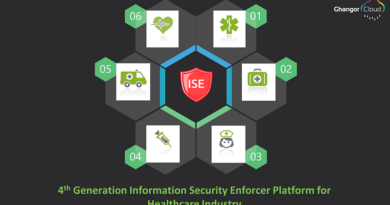Qlik-Driving Data Literacy through Agile Analytics
Last year, the horrors of COVID-19 unfolded a bleak picture, putting real-time care accessibility in the foreground as a priority. From the end users’ perspective, the access to data in real time and near real time was indicative of the healthcare community and healthcare IT solution providers’ preparedness to deal with the pandemic.
COVID-Ready Qlik
Qlik, a leading data and analytics company, responded to the urgency of the COVID-19 crisis with myriad use cases across the global digital care community, from government agencies, health systems, health insurers, and policymakers. The company’s agile analytics platform automates the last mile of analytics-ready data delivery to the right people at the right time.
Many decision-makers were armed with Qlik’s advanced technologies for data exploration to monitor the ongoing situation and make accurate estimates of the health system demands to support initiatives and relevant plans. Qlik later offered solutions that helped users to implement a dynamic approach of data collection, analysis, and prediction – to inform policy decisions in real-time, and iteratively optimize public health recommendations for reopening. “Most reopening plans require extensive testing, contact tracing and monitoring of population mobility, and almost none consider setting up such a dynamic feedback loop until they use Qlik Sense and Qlik’s data replication solution,” says Andy Shore, VP of Public Sector, Qlik. “Relevant, timely data for analyzing the status/impact of these efforts and understanding health system capacity, has helped relief organizations and policy makers effectively model and adjust their response strategies. Agility is one word that best describes Qlik’s products in data and analytics for healthcare through automation of transforming raw data sources to analytics-ready data sets.
Making an Impact with Data Literacy
The company is guided by top minds in the industry with their steadfast commitment to excellence and core operating principles to aid enterprises worldwide move faster, work smarter, and lead the way forward with end-to-end solutions for getting value out of data. Qlik has a global customer base of 3,000 healthcare companies that leverage the firm’s world-class customer experience to support their users’ data strategy, whether on-premise, hybrid, or in the cloud. The very first version of Qlik’s product, QUIK, was introduced in 1994, followed by a patent application in the next year. QUIK stood for Quality, Understanding, Interaction, and Knowledge. Since then, the company has stood steadfast to its mission of empowering customers to make meaningful discoveries that drive actual change. In the healthcare community, Qlik has been helping systems unearth variations in care to better serve the patient community. In other words, make an impact.
At the heart of Qlik’s offerings for data and analytics lies the philosophy of data literacy. Low data literacy inhibits team performance, quality of care, and digital transformation in the healthcare sector. In layman’s term, data literacy is the ability to read, work, analyze and communicate with data. A skill that makes teams and workers unrivaled for their ability to ask the right questions on data and systems to build knowledge that empowers the rest of the team to make the right decisions. “In healthcare, data literacy means that everyone involved with patient care is able to interpret specific data and use it to make decisions to deliver positive patient outcomes, cost-effectively,” adds Shore stressing how data deluge can remain an ordeal for most organizations and their resources only unless they build data literacy for their workforce. “Data literacy is a strategy that can transform an organization while also building loyalty with a workforce that is energized and empowered by their employers’ investment on their professional development.” And rightly so, Qlik’s platform based on the DataOps approach is what most businesses need in today’s digital age to accelerate the discovery and availability of real-time, analytics-ready data to the cloud of their choice by automating data streaming (CDC), refinement, cataloging, and publishing. The company’s agile platform is the industry’s only end-to-end platform that delivers a near real-time analytics data pipeline, data warehouse automation, and data provisioning to the choice of analytics tools. Qlik Sense, one of the flagship solutions, is a complete data analytics platform that sets the benchmark for a new generation of analytics. With its one-of-a-kind associative analytics engine, sophisticated AI, and high-performance cloud platform, users can empower everyone in their organization to make better decisions daily, creating a truly data-driven enterprise.
With Qlik, the customer could bring down the refresh time from 24 hours to 5 minutes. The end result was not in about a few thousand data points, but instead over hundreds of millions of rows of data at a time!
Andy Shore, VP of Public Sector, Qlik
Active Intelligence and What it Means to Customers
Delivering care to thousands of patients annually means accumulating data regarding admission, patient IDs, time stamps, surgery schedules, medical records, electronic correspondence, and more. The challenge is to manage all these without data leaks. Security of patient information and compliance are integral to patient care. One of the customers of Qlik, Children’s Hospital of Pittsburgh (CHP), earlier relied on Cerner consultants to analyze data. They later deployed Qlik products to address their inability to steer decision making due to the odd systems as the patient reports underwent daily refreshing. In addition, the users lacked familiarity to handle the data systems to leverage data for meaningful use. As a result, the client was dealing with over 5,000 tables of medical records that Cerner Millennium created for them. “This type of view does not support fast, real-time decisions, and certainly is not user-friendly for a large staff who would all benefit from being able to view and interact with the data. Only the administrators could view the data, having to navigate the complex data models to find the right information,” adds Shore. Christopher Meyers, Systems Analyst at CHP knew that the hospital had to make the shift. And therefore, the client integrated hundreds of millions of rows of data using Qlik to create simple, visually appealing, and properly governed dashboards. With Qlik, the customer could bring down the refresh time from 24 hours to 5 minutes. The end result was not in about a few thousand data points, but instead over hundreds of millions of rows of data at a time!
Within a year, the client incurred significant cost savings by reducing previous inefficiencies. CHP reduced the cost of care for patients with appendicitis by 11 percent and data errors were found and corrected, such as duplicated records, and missing or incorrect timestamps. Readmissions were reduced due to better management of health records, and the overall registration workflow was significantly improved through the standardization of canceled or duplicate registrations.
Qlik apps provide analytics to more than 500 personnel in CHP and focus on areas such as ED, Surgical Analysis, and monitoring adherence and impact of clinical pathways for Acute Appendicitis, Isolated Hyperbilirubinemia (jaundice in newborns), Cellulitis and Simple Abscess, and Bronchiolitis.
As the demands in healthcare surge driving a change in modern analytics, a need has emerged in the industry to overcome the shortfalls of legacy analytics approaches and Qlik is set itself up to the task of delivering a state of continuous intelligence from real-time, up-to-date information designed to trigger immediate actions. “We call it Active Intelligence,” says Shore. “Active Intelligence closes the gaps among those components, creating a multidirectional conduit for the continuous flow of data and information across the organization. This intelligent data analytics pipeline enables fresh data to reach users almost as soon as it comes in the door.”



